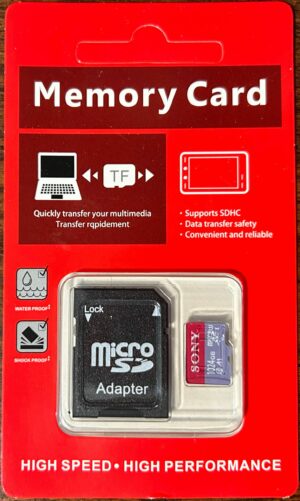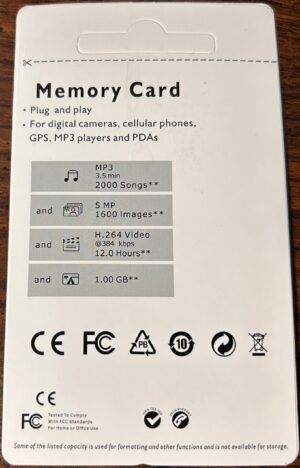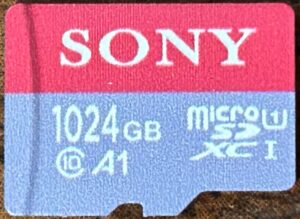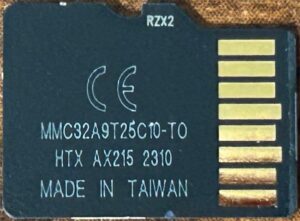- Obtained from: AliExpress
- Price paid: $5.17
- Advertised capacity: 1024GB
- Logical capacity: 1,073,742,872,576 bytes
- Physical capacity: 31,224,393,216 bytes
- Fake/skimpy flash: Fake flash
- Protected area: 0 bytes
- Speed class markings: Class 10, U1, A1
- CID data:
- Manufacturer ID:
0x00 - OEM ID:
0x0000 - Product name:
0x0050ffffb0 - Product revision:
0x00 - Serial number:
0x12800188 - Manufacture date: Aug 2013
- Manufacturer ID:
- Sequential read speed (MB/sec): 11.83
- Sequential write speed (MB/sec): 10.08
- Random read speed (IOPS/sec): 492.28
- Random write speed (IOPS/sec): 6.01
- Read/write cycles to first error: 359
- Read/write cycles to complete failure: 460
- Total days to complete failure: 48
- Card reader used: JJS CR-UTC4AC
- Package front:

- Package back:

- Card front:

- Card back:

Discussion
Like the smaller 32GB sibling, I bought this to see if I could find genuine flash and fake flash in the same brand, as well as to evaluate some knockoff brands. Unsurprisingly, this card turned out to be fake flash — which I heavily suspected would be the case when I ordered it. It was a bit of a surprise that it turned out to have 32GB of space — as opposed to some of the other fake cards I have, which were 4GB and 8GB.
This card did pretty abysmally in terms of performance, falling more than one standard deviation below average on all performance metrics. It even fell well below average when compared to the other knockoff cards I evaluated. It was barely enough to merit the Class 10 and U1 marks that it bore, but it fell well short of the speeds it would need to merit the A1 mark.
Where this card surprised me was on its endurance tests: it only managed to go for 359 read/write cycles before it started showing issues, and only 460 cycles before it stopped responding to commands. This puts it well below average, even when compared to the other knockoff cards I tested, and — as of the time of this writing — the knockoff card that has survived the least number of read/write cycles before failing.
March 15, 2024

